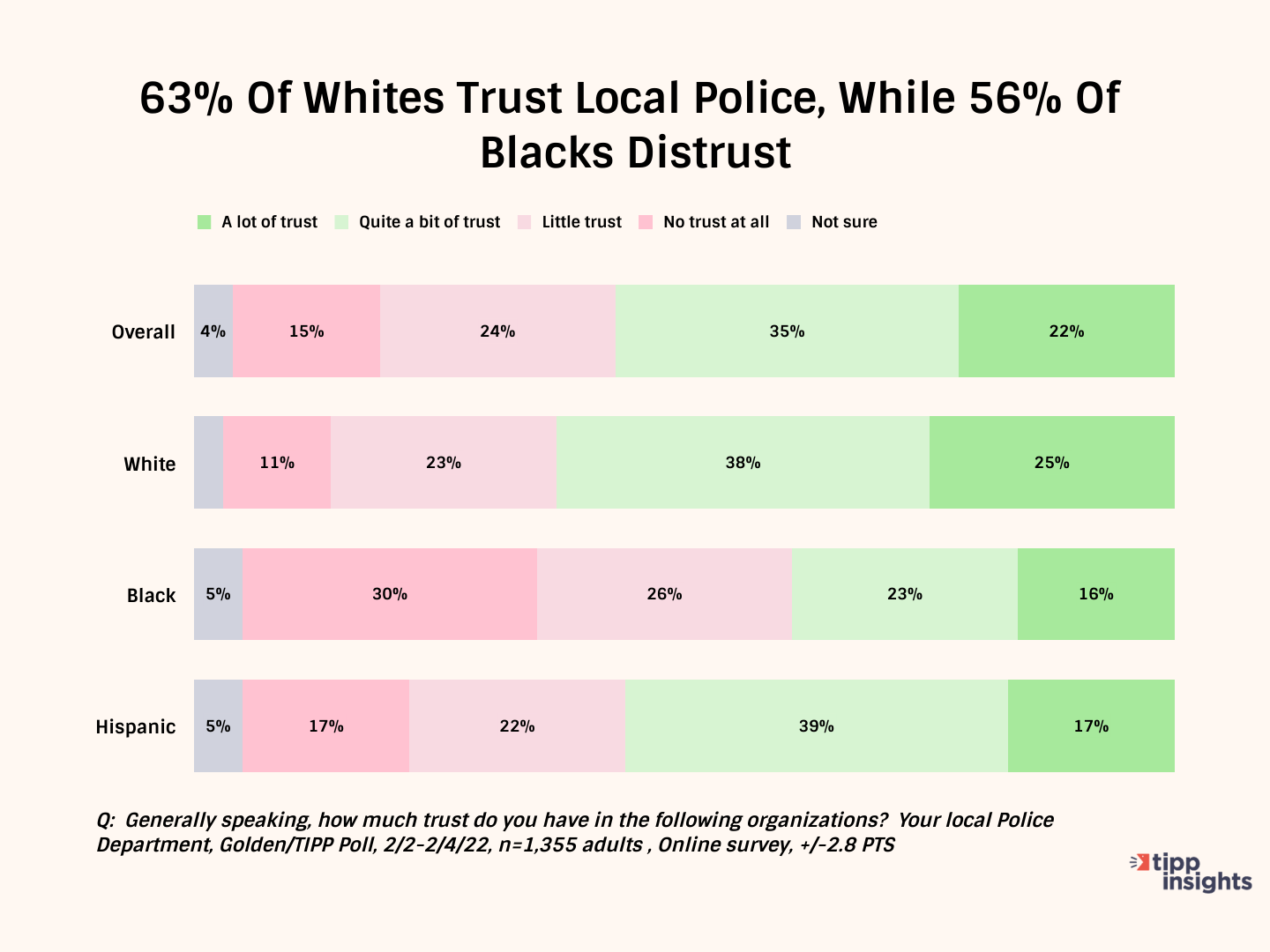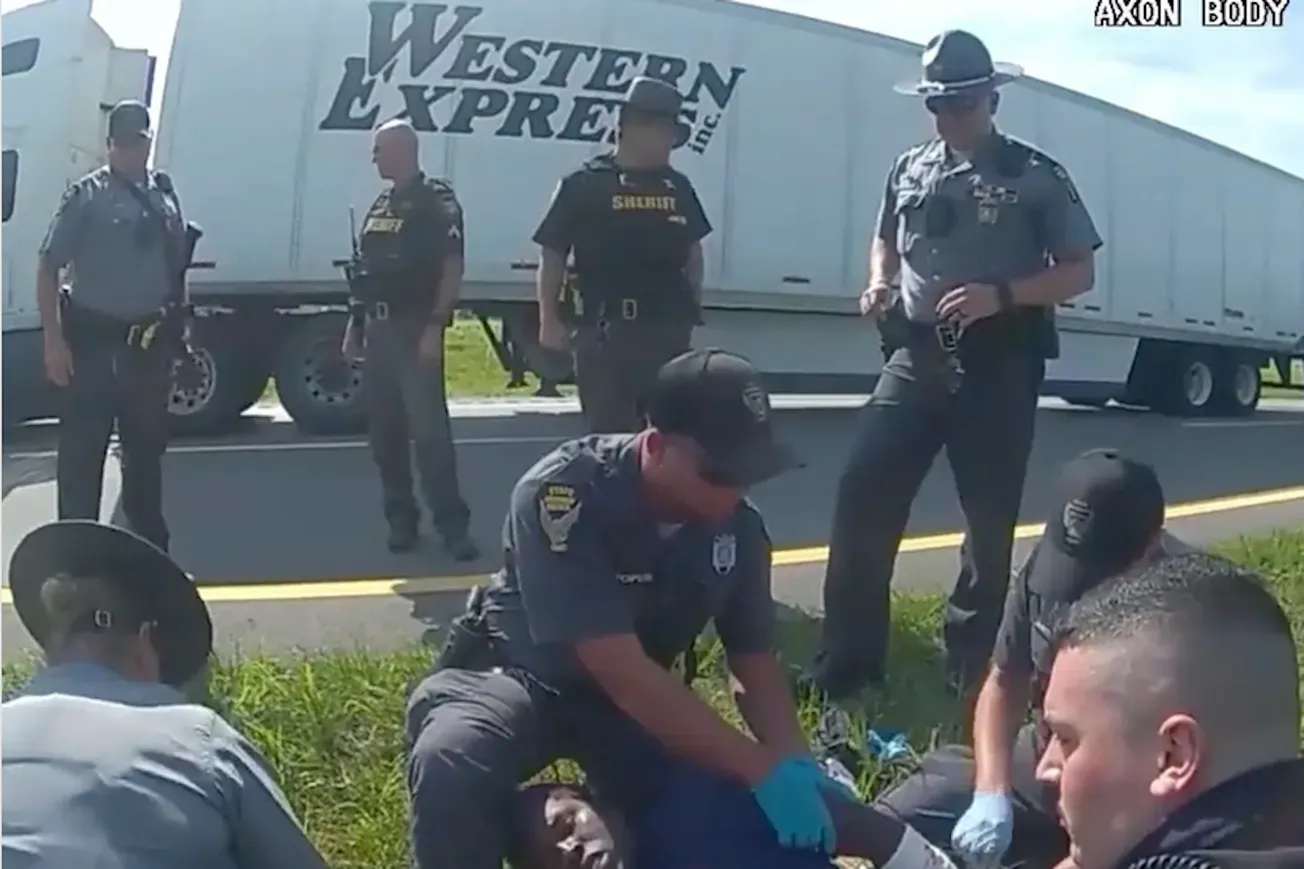The George Floyd incident in Minneapolis three years ago, when white police officers executed a chokehold on a Black man resulting in his death, changed America's race relations forever and set the country back several decades.
Unfortunately, too many political leaders exploited the Floyd incident for their own gain - by only focusing on police brutality and not the circumstances that led to the unfortunate interaction. The political Left sent a clear message that their interests were larger than Floyd's - and as a result, no meaningful policy changes were adopted.
Black Lives Matter (BLM) became a movement that depicted that all Blacks were in danger from the unruly actions of white police officers - an exaggeration that overlooked whatever progress America had made. Riots ensued for months, and nearly 25 deaths resulted, with billions in property damage. Big Tech joined hands and disallowed reasonable discussions about the riots during those peak Covid transmission months. Cancel culture was so prevalent that even pointing out apparent truths about Floyd's troubled background could jeopardize careers.
Employing Saul Alinsky's advice, "Never let a crisis go to waste," the Left ushered in a series of ambitious policy initiatives.
But voters pushed back. They soundly defeated candidates advocating for teaching critical race theory in schools, with some states like Florida and Texas banning such instruction state-wide. In Virginia, GOP candidate Glenn Youngkin won the governor's mansion primarily on the anxiety parents faced from aggressive school boards.
Defunding the police, an irresponsible movement to move local dollars from law enforcement budgets to community services faced a severe backlash nationwide in the 2022 elections. In New York City, Eric Adams won the Mayor's office. He is a former police officer critical of the defunding movement and with plans to step up law enforcement.
Today, BLM is a troubled movement. An executive at Black Lives Matter Global Network Foundation (GNF) was accused of "siphoning" more than $10 million from donors. Most Americans do not know who leads BLM - and without a recognizable face, the organization risks becoming a forgotten endeavor.
But a familiar scene played out just three weeks ago in Circleville, Ohio, and a responsible BLM organization could have had a valuable role. As reported by the New York Times, a Black truck driver was pursued by white police officers for nearly 20 miles - before one officer unleashed his K-9 dog on the unfortunate driver. The dog bit the trucker and was treated later.
The story reeks of racism, and no amount of after-incident actions (the Circleville Police Department fired the officer) can explain why the incident occurred in the first place in the world's wealthiest nation.
According to the Census Bureau, Circleville is a small town of about 14,000 people with a population that is 94% white. Blacks are fewer than 3% of the demographic. The city connects multiple state highways, so it should see a fair amount of trucks, many operated by Black, Hispanic, and Asian drivers, as the only major stop 36 miles south of Columbus. Why did the police show such extreme callousness to a trucker?
It turns out that Jadarrius Rose, a Black truck driver from Memphis, was driving on U.S. Route 35 in rural Jackson County, Ohio, nearly 50 miles south of Circleville. His crime was that he did not stop at an inspection station - because his truck had a missing left rear mud flap. We are not making this up.
The Ohio State Highway Patrol pursued him - Mr. Rose said 20 police cars were in the chase. If this doesn't read like excessive use of force and wasted resources, we do not know what does. When the trucker did not "comply" with the sirens and the orders to pull over, the police deployed the stop stick technique using a spike belt with metal barbs or teeth pointing upwards. Driving over the stick resulted in the truck's tires immediately puncturing and the vehicle coming to a stop.
According to the Times, Mr. Rose eventually got down from the stopped truck and put his hands up outside his vehicle. He was no threat at all to the police, as evidenced by the body cam video. Still, a Circleville police officer with a canine released his dog on the driver, whom the dog bit, blood visible on his arm.
The ultimate charge on Mr. Rose? He failed to comply with officer instructions.
While the driver's actions in not stopping when first ordered to by the police are illegal, we can't imagine what must have been going on in his head when 20 officers chased him with guns drawn before the chase started.
Mr. Rose sought help from the 911 dispatcher - twice - saying: "I'm trying to figure out why they've got their guns pulled out. And it's all really white people; they've got their guns out. I don't know why they're trying to kill me."
The fact that Mr. Rose spoke to the dispatcher indicates that he would have complied if overwhelming force had not been used on him. He legitimately feared for his life. We do not understand why the dispatcher did not order most of the officers to stand down - and negotiate with the driver to pull over and surrender with only a few police cars in the chase.
We understand that a police officer is perennially in danger, with each traffic stop potentially culminating into their last-ever stop. But this situation does not mean that 20 officers should chase down a suspect and have a dog released on him, bringing back memories of the civil rights battles of the 1960s.
Some things in America have not changed.
Related Video/Data
Trucker attacked by Ohio police dog while surrendering speaks out l GMA

Like our insights? Show your support by becoming a paid subscriber!







